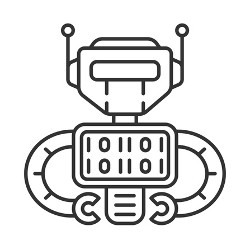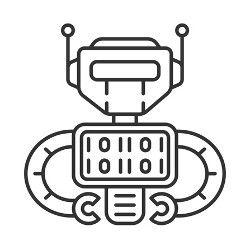
The UiPath platform combines core robotic process automation (RPA) capabilities with tools for process discovery and analytics to report precisely the business impact. The core capabilities make it easy to build, deploy, and manage software robots (SRs) that emulate humans’ interactions with information systems to perform certain tasks in business processes (BPs). Firstly, the BPs to be automated are designed, created, or recorded. They are created using drag-and-drop activities within a workflow. Then SRs work to perform BPs and an orchestrator acting as a control center designates tasks/processes to SRs and evaluates the efficiency of each one. A tool takes screenshots with every mouse click or keyboard input and collects smart data about process statistics such as execution time or number of actions.
SRs follow the choreography of specific modules, while operating with IT infrastructure and using established applications. SRs can understand what is on a screen, complete the right keystrokes, navigate systems, identify and extract data, and perform a wide range of defined actions. Advanced SRs can perform cognitive processes like interpreting text, engaging in chats and conversations, understanding unstructured data, and making complex decisions by applying advanced ML models.
UiPath is a remarkable European success exported to the world in the RPA space to digitalize societies and to build a complex ecosystem driven by innovation.
The current challenges with the UiPath platform include the need for continuous releases to increase value through the integration of more cognitive and cybersecurity services. It encourages new guidelines and standards that guarantee trust and safety use. Academics help educate potential adopters by objectively researching actual implementations, by assessing them and extracting lessons on realizing value. A common effort with academics is essential to develop harmonization. Steps toward consensus include the definition of a clear and consistent terminology in the use of concepts that belong to the RPA, a taxonomy of product features and functionality, or some recommended practices for implementation and management methodologies.
European interest is increasing digital innovation by promoting start-ups, scale-ups, and unicorns and supporting their inclusion in the ecosystems with a direct impact on the growth of global success. Being supernatural creatures, unicorns are very rare. Their friendliest places to develop provide a financial and innovation-driven climate. Eastern Europe has some of the best and competitive ICT talents and the desire to connect to the world. Particularly, Romania has the education strength in computer science and mathematics, but the culture of entrepreneurship is young and it takes time to grow. The founders and the platform R&D team of Ui-Path are computer science graduates from Romanian universities. In the new reality related to the digital transformation,1 Romania has developed into a center of excellence becoming an outsourcing regional hub in ICT.
UiPath is a remarkable European success exported to the world in the RPA space to digitalize societies and to build a complex ecosystem driven by innovation (see Figure 1a). It contributes with RPA solutions6 to current challenges by creating virtual digital workforce and solving social issues. Many industries are worried about the decrease of the workforce in the near future and face major problems due to ageing or overworked employees in departments that depend on best usage of digital data. SRs can automatically execute deterministic, repetitive, standardized, high volume, and rules-based tasks by capturing and analyzing structured data and working across several interoperable systems. SRs are best suited to do swivel chair-data entry, taking information from one system and integrating it with another. Figure 1b provides several RPA solutions to a common use case challenge.
UiPath is an important software platform provider with Romanian roots that became a successful global tech company with headquarters in the U.S., where the deepest ecosystems are located. It grew explosively, both in size and value, to a unicorn and recently scaled up to a decacorn. An article in The Economist2 declared UiPath as “Europe’s most successful tech export since Spotify” and estimates it holds a third of the market. Moreover, ranking analyzes from Gartner3,5 places it the highest position and recognizes UiPath as the “2021 Magic Quadrant Leader in the RPA space” for its ability to execute for the third consecutive year.
The fantastic journey of the Romanian start-up that began in 2005 was marked on April 21, 2021—a glorious day for UiPath as it became a decacorn and a publicly trading company on the New York Stock Exchange. Due to an insufficient entrepreneurial climate, the path toward success wasn’t straightforward5 (Figure 2). Only the team value, the software platform quality, and the commitment to building a large company convinced investors, clients, and business partners. Its great innovation occurred during the rise of AI and cloud technologies when its growth took off with a new product flightmap that integrates ML and AI algorithms within customers’ business operations. In 2018, it was the fastest-growing enterprise software company ever with the most widely used RPA platform in the world. Since then it has remained in the leader position.

Figure 2. Recognition race—pioneering work, timeline of some key UiPath events.





Join the Discussion (0)
Become a Member or Sign In to Post a Comment